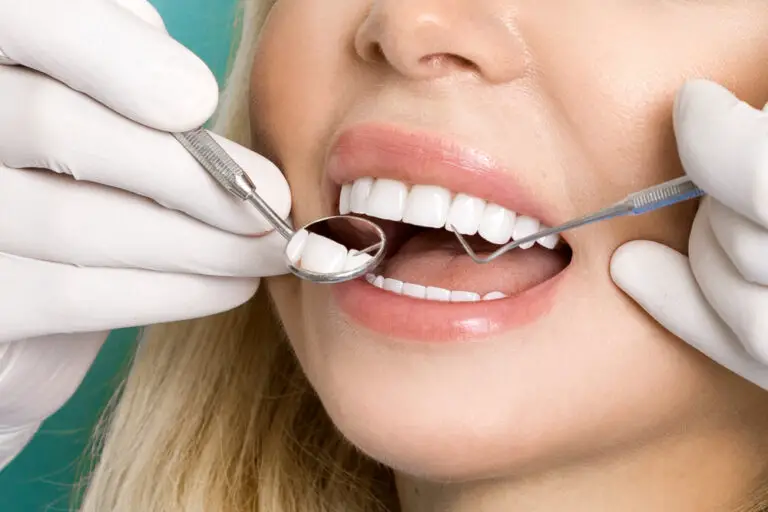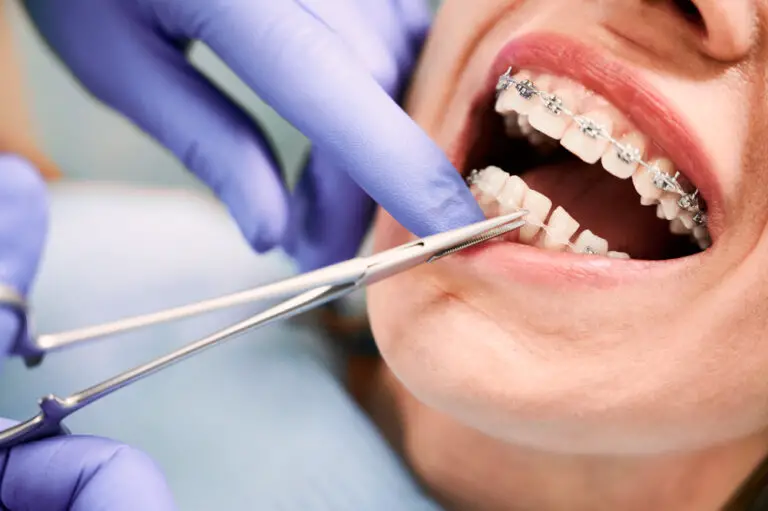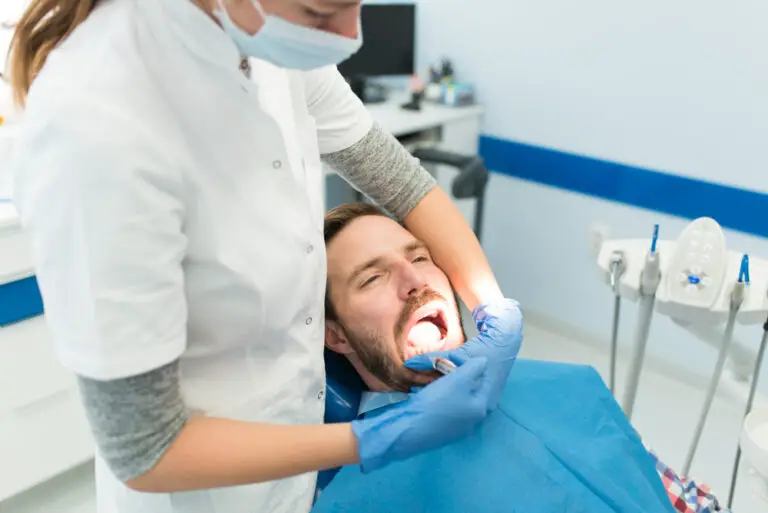What are vape stains?
Vape stains are stains that appear on teeth as a result of vaping or using e-cigarettes. The vapor produced from vaping contains chemicals that can stain teeth over time, leaving them looking yellow, brown, or even black.
Some of the main chemicals in vape liquid that contribute to stains include:
- Nicotine – Nicotine naturally stains teeth as it contains tars that cling to enamel. The longer nicotine touches teeth, the more embedded the stains become. Over time, nicotine turns into cotinine which also deposits on teeth.
- Food coloring – Many vape juices contain food coloring additives for aesthetic purposes that can deeply penetrate tooth enamel. Darker synthetic coloring compounds in particular are more likely to adhere to teeth and cause noticeable discoloration.
- Sweeteners – Sugary sweeteners like sucrose and sucralose are commonly added to e-liquids to improve flavor. But they also promote staining by feeding oral bacteria that produce tooth-discoloring acid.
- Propylene glycol – A very common vape liquid base that causes buildup through repeated exposure. Its syrupy consistency enables it to stick strongly to tooth surfaces.
- Vegetable glycerin – Another thick, sticky liquid commonly used as a base in vape juices. Accumulated residue from vegetable glycerin leaves an opaque film on teeth.
- Flavoring chemicals – Certain flavoring compounds like cinnamon and citrus oils can stain teeth with frequent vaping over time. They react with saliva to form tenacious plaque.
These substances interact with saliva to form stubborn plaque on teeth that hardens into discoloration. Stains often start off yellow but then darken over time with prolonged vape usage as tars accumulate. The front teeth that are most exposed directly to the vapor during inhalation are usually the most affected with concentrated staining. However, residue reaches all areas of the mouth with time.
What factors cause worse vape stains?
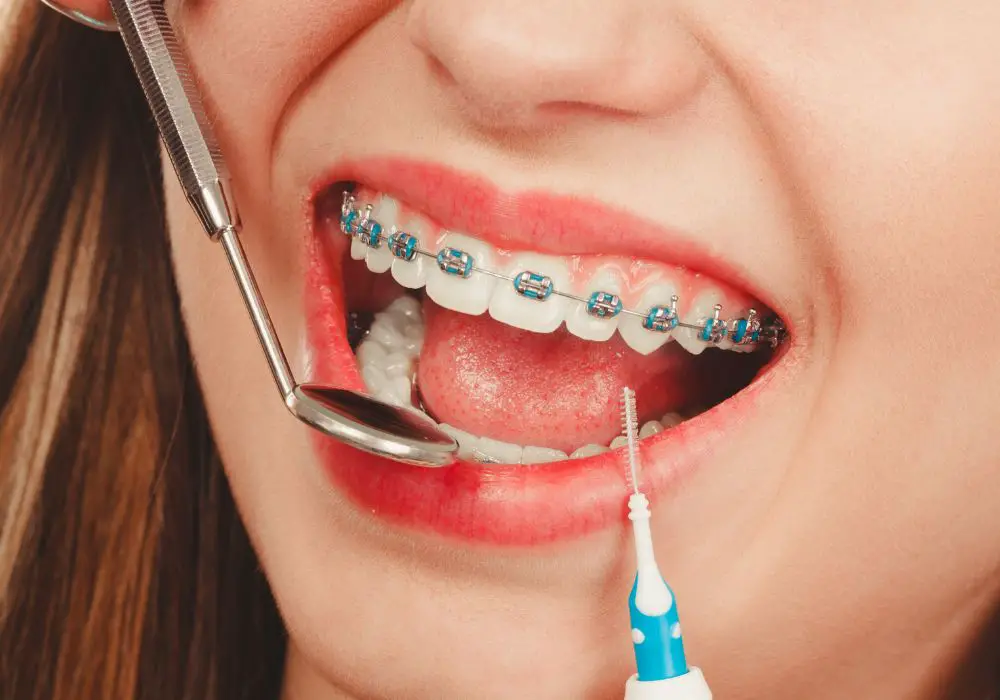
Certain vaping habits can accelerate tooth staining:
- Higher nicotine concentration – E-juices with nicotine levels above 6mg/mL deposit substantially more enamel-penetrating tars than lower nicotine juices. The higher the nicotine, the more rapid and dark the discoloration.
- Darker e-liquid flavors – Darker colored juices like cola, coffee, chocolate and dessert flavors stain teeth far more noticeably than lighter, clear e-liquid flavors. The thick pigments easily affix to tooth surfaces.
- Not brushing teeth – Infrequent brushing and flossing allows thick layers of staining residue to steadily build up and calcify into stubborn discoloration that penetrates deeper into enamel grooves.
- Dry mouth – Low saliva flow reduces the natural cleasing effects of saliva’s microbes and enzymes. Vaping inherently causes dry mouth, enabling more stain accumulation.
- Length of vaping sessions – The longer and more frequent your vaping sessions, the more staining vapor coats your teeth again and again. Prolonged exposure leads to markedly darker stains.
- Higher vaping temperature – Very hot vaping temperatures above 550°F exponentially increase staining rates. More vapor chemicals precipitate out at higher heat.
Additionally, certain users may be more prone to vape stains for reasons like:
- Poor oral hygiene – Pre-existing plaque buildup, lack of brushing, and dental calculus accelerate staining by providing material for vape chemicals to adhere to.
- Porous tooth enamel – Weak spots, cracks and transparency in enamel create microscopic holding spots that readily absorb discoloration.
- Dehydration – Chronic insufficient water intake leaves the mouth parched. Lack of hydration and saliva flow worsens vaping-related dry mouth.
- Staining diet – Consuming lots of staining foods and drinks like coffee, tea, red wine, soda, berries, tomato sauce, curry and tobacco use worsens discoloration.
- Nighttime mouth breathing – Those who breathe through the mouth while sleeping have drier mouth conditions and less saliva to combat stains.
So in summary, the hue, nicotine content, frequency, length and temperature of vaping coupled with individual diet, oral hygiene and mouth conditions determine the severity of vape-related tooth discoloration.
Health effects of vape stained teeth
Aside from just an unsightly appearance, vape-stained teeth can negatively impact oral health:
- Tooth decay – Discolored plaque buildup provides a haven for bacteria to multiply and produce enamel-eroding acid that causes cavities.
- Gum disease – Tooth-staining plaque accumulation irritates gums, enabling periodontal bacteria to flourish and instigate gingivitis and periodontitis.
- Tooth sensitivity – Microcracks and thinning in enamel from recurring hot dry vape smoke can expose dentin tubules and nerves, causing sharp pains from hot and cold foods.
- Halitosis – Foul-smelling volatile compounds from vaping gather in mouth bacteria, causing bad breath. Stained plaque also smells rotten.
- Misleading health signals – Since vape stains resemble tobacco stains, they can prompt false assumptions by dentists about smoking habits which impact treatment.
The good news is that stains from vaping appear to be largely cosmetic without more severe permanent effects like those from cigarette smoking. But it is still crucial to minimize staining by practicing good oral hygiene. Otherwise plaque buildup can lead to dental caries, gum inflammation and eventual tooth loss over time if left untreated.
How to prevent vape stains
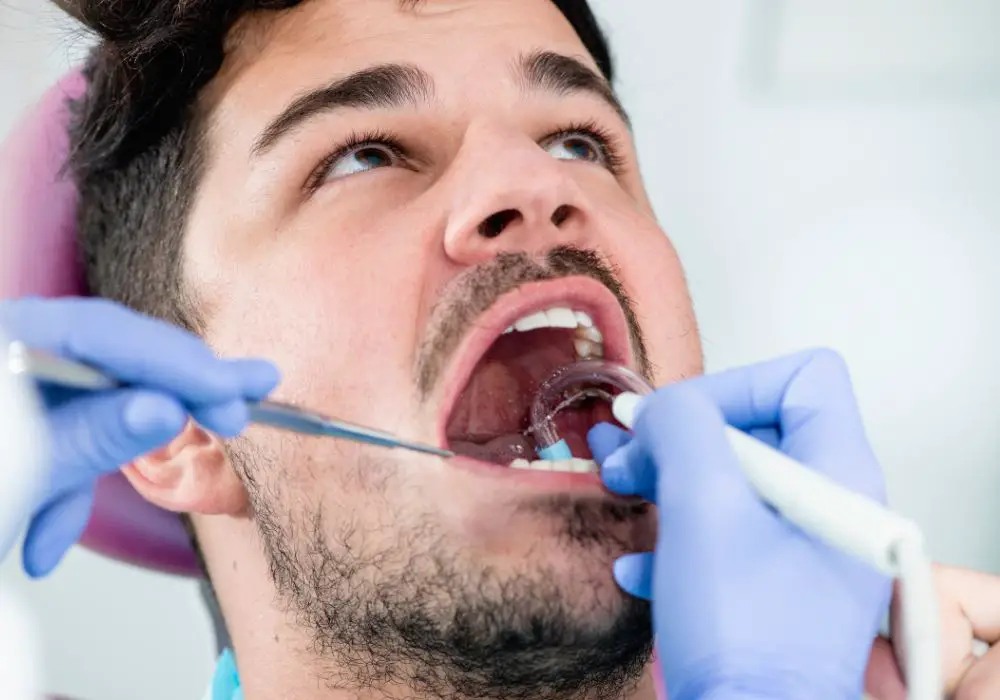
The most effective way to avoid vape stains on your teeth is to avoid vaping altogether. But for those unwilling or unable to quit, these tips can help minimize further staining:
- Brush teeth gently after vaping – Gently brushing soon after vaping sessions can clear some residue before it permanently adheres to enamel. But avoid abrasive brushing motions which worsen enamel wear.
- Use antiseptic mouthwash – Using mouthwashes containing ingredients like cetylpyridinium chloride, hydrogen peroxide, sodium chlorite or chlorine dioxide help neutralize stains between brushing.
- Drink plenty of water – Staying fully hydrated and drinking water while vaping helps prevent dry mouth. Water washes away some stain-causing chemicals before they deposit.
- Limit e-juice flavors – Opt for lighter, clearer e-liquid flavors with fewer staining additives. Unflavored may be unpalatable, but reduces staining.
- Vape less frequently – Reducing total daily vaping time prevents excessive repeat exposure. Take breaks between puffs to let teeth remineralize.
- Use a vape spacer – Attach a spacer between vape pen and mouth to minimize staining direct contact.
- Get regular dental cleanings – See your dentist for professional cleanings every 6 months to catch stains before they intensify.
- Consider less staining vape tools – Consult vape shops on options like pens, tanks, drip tips and percolator stems that reduce staining.
- Avoid hotter temperatures – Keep vaporizer temperatures under 510°F if possible to limit chemical precipitation.
- Stop using e-liquids with food coloring – Synthetic coloring, especially darker shades, causes major tooth staining. Avoid it.
Making strides to prevent vape stain buildup in the first place will reduce the eventual need for removal down the line. Be proactive with dental care and limitations on vaping.
How to get rid of vape stains on teeth
If you already have vape stains on your teeth, there are methods you can use at home and professionally to improve their appearance:
Home remedies
- Whitening toothpaste – Seek out toothpastes containing gentle polishers like silica, baking soda or calcium carbonate that safely buff away surface stains with regular brushing motions. Avoid highly abrasive formulas.
- Hydrogen peroxide – Dilute household hydrogen peroxide with water, then swish and gargle the solution in the mouth for 60-90 seconds once or twice daily to oxidize stains. Rinse thoroughly afterwards with water and don’t swallow the peroxide.
- Baking soda – Make a paste with baking soda and water. Gently rub it onto stained teeth for 1-2 minutes a few times per week with a soft brush to mechanically lift stains as an abrasive formula. Rinse thoroughly after.
- Apple cider vinegar – Mix organic apple cider vinegar with water. Swish the diluted ACV in the mouth for 60 seconds before brushing to dissolve stains with the acetic acid. Rinse when done.
- Coconut oil pulling – Swish a tablespoon of solid virgin coconut oil in the mouth for 10-20 minutes to “pull” out stains from teeth before spitting it out. Rinse well after.
- Strawberries – Smash a ripe strawberry and directly rub it over stained teeth for a minute or two. The fruit acids provide a natural stain removing effect. Rinse thoroughly after.
- Lemons – Swish diluted fresh lemon juice in the mouth before brushing to let the citric acid oxidize stains. Rinse afterwards. Be cautious not to overuse acids.
- Charcoal – Brush occasionally with charcoal powder or charcoal-infused toothpaste for its highly porous texture that absorbs surface stains. Rinse completely when done.
- DIY bleach gel – A dentist can take impressions and provide a custom dental bleaching tray with carbamide peroxide whitening gel to apply 1-2 hours a day.
Professional teeth whitening
For more dramatic stain removal, visit a dentist for professional whitening procedures like:
- Power whitening – A concentrated 35% carbamide peroxide bleaching gel applied alongside an LED light to shine energy that accelerates gel activation for faster stain oxidation.
- Laser whitening – A dentist directs an intense dental laser beam concentrated directly on stained teeth to penetrate deep into enamel and disrupt stubborn intrinsic stains.
- Air polishing – A pressurized air tool sprays fine sodium bicarbonate particles or amino acid crystals to gently but abrasively sand away external dental stains.
- Deep cleaning – Dental hygienists meticulously scrape away tenacious extrinsic below-gum-line stains during scaling and root planing procedures.
Professional in-office whitening produces dramatically faster results than home techniques but also costs substantially more without insurance coverage. For severe cases, combinations of deep cleanings, laser whitening and dental restorations like bonding or veneers may be recommended by the dentist.
Home vs professional whitening
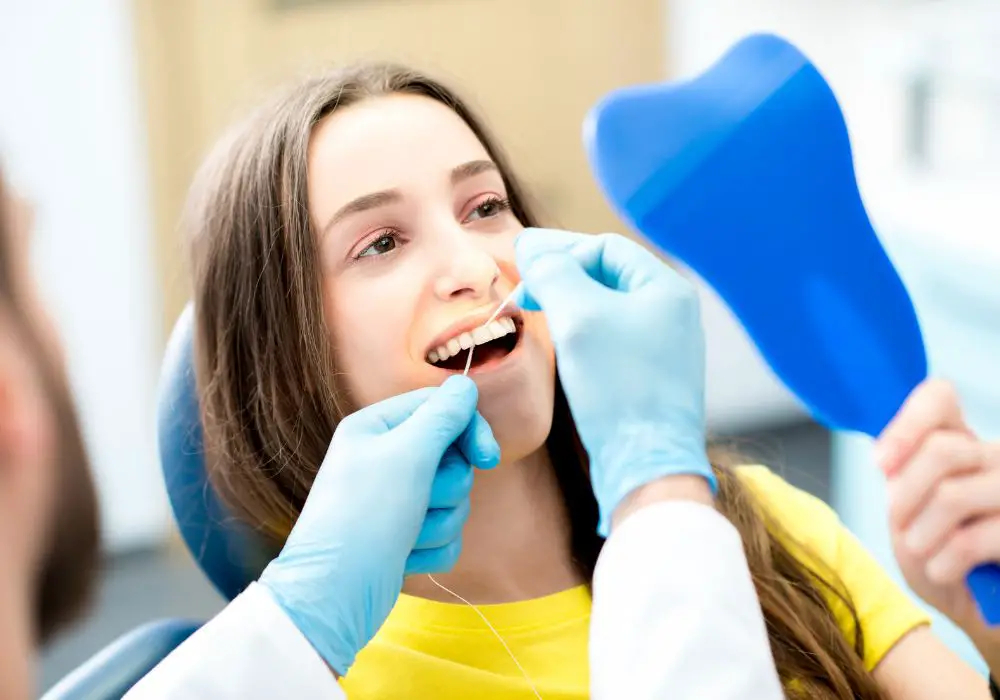
Home and professional whitening methods can both effectively remove vape stains to varying degrees, but have some key differences:
| Home Whitening | Professional Whitening | |
|---|---|---|
| Methods | Whitening toothpastes, bleaching gels, abrasive rubs, natural acids | Powerful LED light activation, laser energy, pressurized air abrasion, deep cleanings |
| Cost | $15-$100 for over-the-counter products. Custom trays $200-$400 | Around $500-$650 per visit without insurance |
| Speed | Gradual lightening over weeks/months of daily use | Fast dramatic results in 1-3 visits |
| whitening intensity | Mild to moderate stain removal | Can whiten beyond natural teeth shade |
| Safety | Potential for enamel erosion from overusing acids | Higher risk of tooth sensitivity for a couple days |
| Duration of results | Typically last a few months then restaining occurs | Usually lasts 1-3 years with occasional touch-ups |
| Convenience | Easy to do at home on your own schedule | Must book appointments during office hours |
| Candidacy | Anyone can try home methods | Teens and some health conditions may not be candidates |
For light surface stains, home remedies used consistently over time can provide a gentle lift. But for deeper set intrinsic vape discoloration, the powerful methods available professionally give dramatically faster and more effective whitening results in just a visit or two.
Maintaining a white smile after whitening
Removing existing stains through whitening treatments is only half the battle – maintaining and protecting your bright smile long-term after investing time and money into the process is critical. Here are some tips:
- Continue brushing twice daily with a whitening or charcoal toothpaste to prevent new stains from developing.
- Floss thoroughly every day before brushing to dislodge staining material between teeth where the brush can’t reach.
- Have regular dental cleanings every 6 months for a hygienist to remove new stains early before they compound.
- Drastically reduce vaping frequency and intensity. Use lower nicotine, lighter juices. Attach a vape mouthpiece spacer.
- Drink at least 64 oz. of plain filtered water daily, especially while vaping, to rinse the mouth and prevent dryness.
- Limit consumption of dark staining foods and beverages like coffee, tea, red wine, berries, tomato sauce, soy sauce, tobacco, and pops.
- Apply whitening strips or custom trays with bleaching gel a few times per year for touch-up maintenance.
- Try oil pulling with coconut oil 2-3 times weekly to help prevent new stains.
- Sleep with a custom nightguard if nighttime teeth grinding is causing renewed staining in certain areas.
- Avoid habits like smoking, chewing tobacco, nail biting, and using your teeth as tools.
Staying diligent about oral hygiene and healthy habits protects your investment in a bright white smile. Avoid resuming behaviors that originally caused severe discoloration. Be vigilant about touch-ups.
Frequently Asked Questions
Can severe vape stains be completely reversed?
Yes, it is possible to fully reverse even the worst vape stains through professional procedures like powerful laser whitening, air abrasion polishing and deep teeth cleanings below the gum line. But completely reversing down to the natural tooth shade may take several repeat sessions based on the stain intensity.
Do vape stains ruin teeth permanently if left untreated?
The stains alone don’t necessarily cause permanent damage, but leaving them long-term does risk permanent issues. Without removal, the buildup acids from staining bacteria can progressively erode enamel and lead to irreversible cavities and tooth structure loss over time.
Can you effectively remove vape stains at home?
Home remedies can lighten and lift mild to moderate vape stains with persistent use over weeks to months. But they may not fully remove deep-set intrinsic discoloration. For more dramatic whitening, professional options like lasers work faster.

